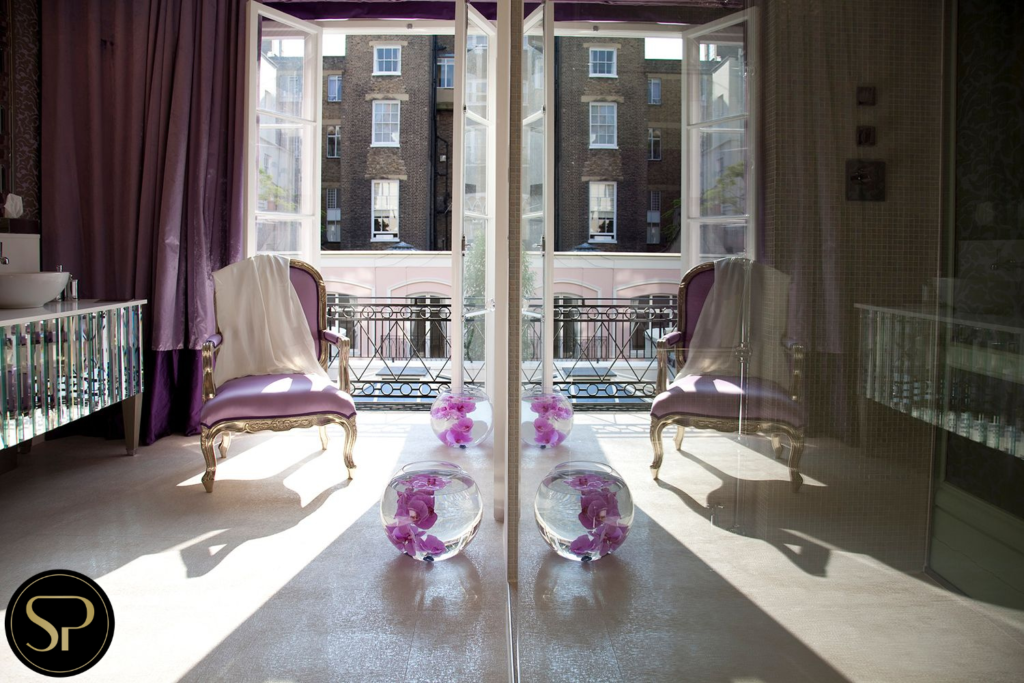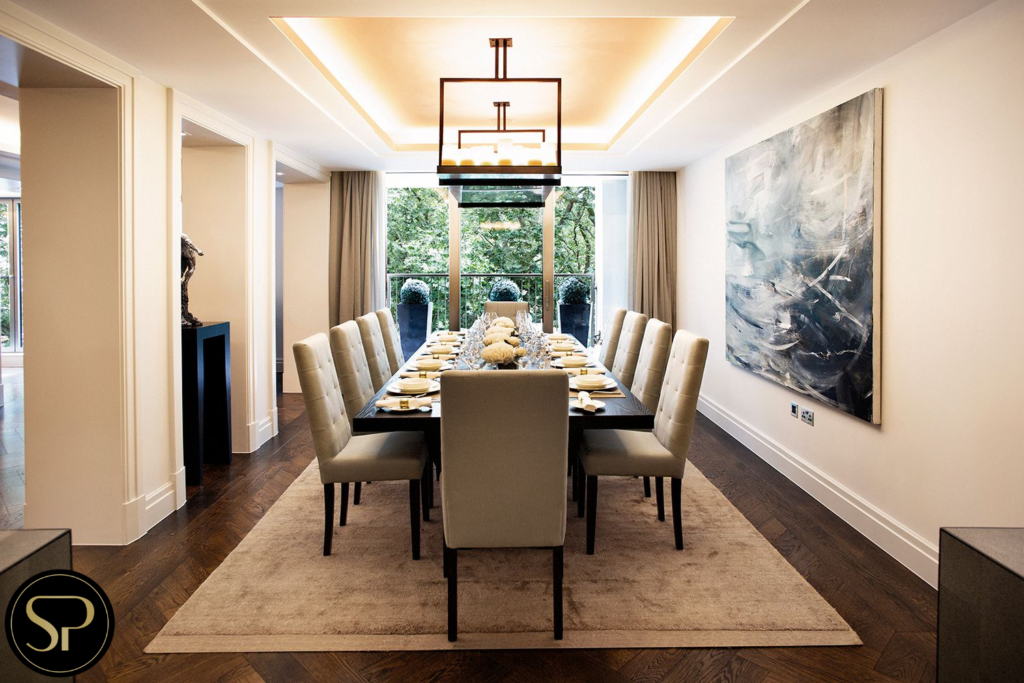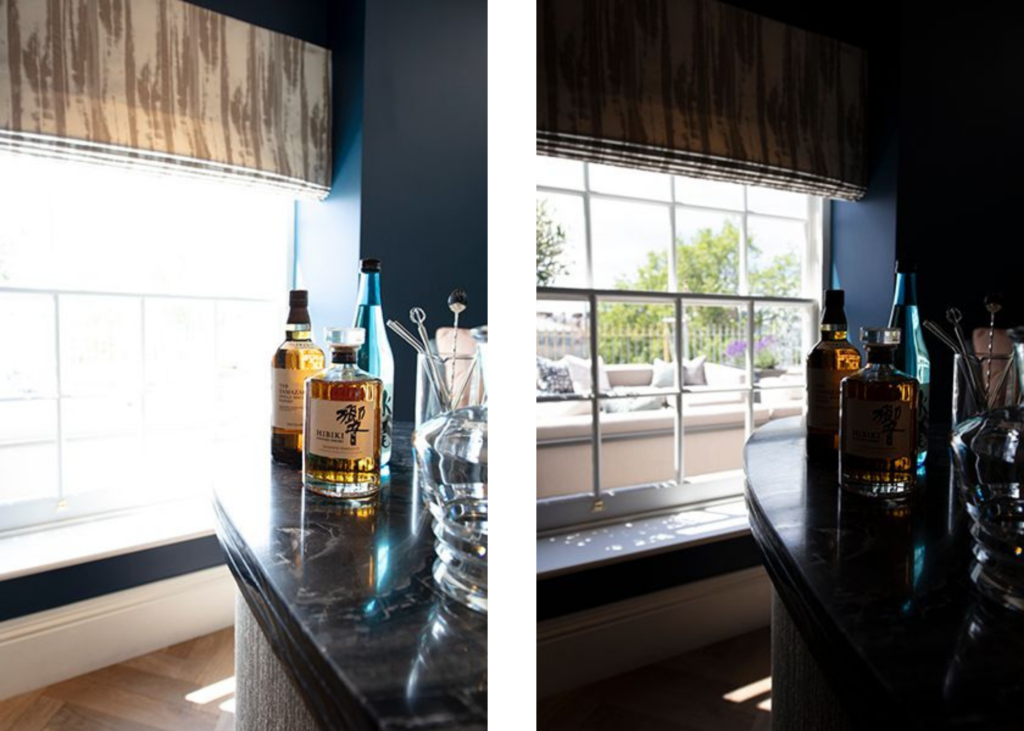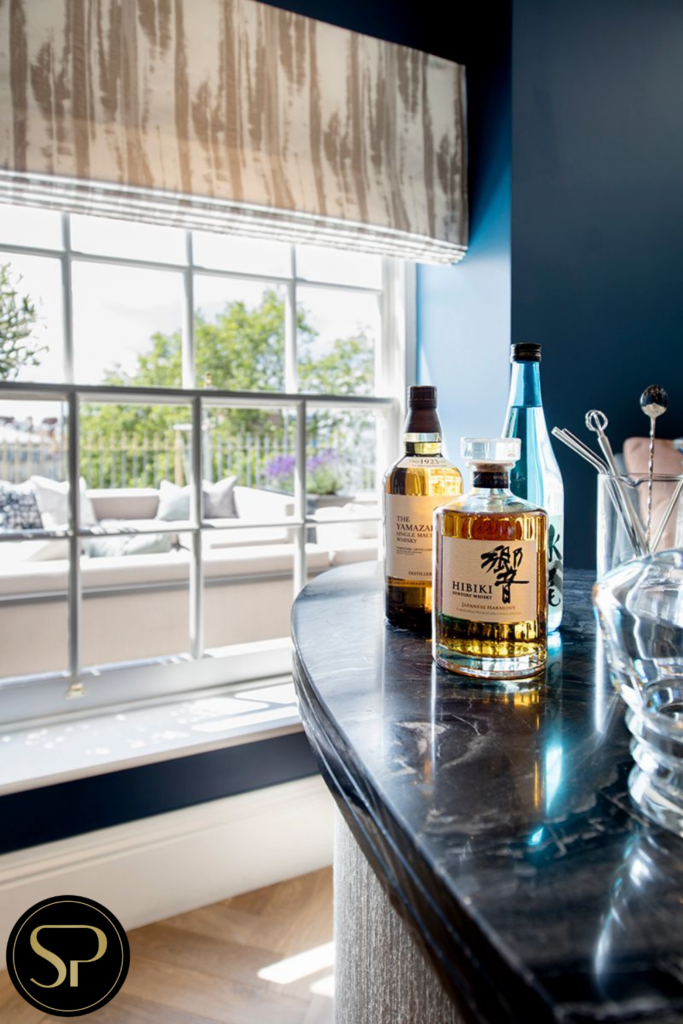How to Use Lighting to Create the Right Atmosphere

In all photography, lighting is the most important aspect to create an appropriate atmosphere for a space. When capturing an interior, there are many sources of light that can influence the ambience.
A window can provide the perfect light needed to convey a space’s atmosphere, or it can cause problems.
Problems such as, the sun creating areas that are too bright (commonly known as hot spots). These hot spots lead to the darker areas within the space becoming underexposed, and the bright areas becoming too bright. All of these conflicting factors result in a photograph that would be distracting and unusable.
When approaching an interior photoshoot where the space has windows, it’s important to consider the following:
- What is the view outside of the window?
- Is it worthy of including in the picture?
If it isn’t worthy of being included, it should be subtly too bright or blurred to ensure viewers can’t pick out detail beyond its panes.
If you find yourself photographing a space with unfavourable lighting, using flash might be a solution. However, it must be acknowledged that filling in dark areas with flash can also take away from any atmosphere which the natural light creates.
Finding the Right Balance
Whilst our eyes automatically balance light, a camera does not. Therefore, it’s important for an interior photographer to be able to find the right balance of lighting in Photoshop. Below shows a side-by-side comparison of the same room…

But below, in the final composite shot, we can see the light is balanced inside and out:

Another example of this is shown below, it’s incredibly important to balance lighting. In this case, the outdoor light is more of a blue (colour temperature) light however inside, halogen bulbs cast a more yellowish light. Cameras can’t detect this therefore it’s the photographer’s responsibility to balance the lighting and find a visually appealing balance.

The following image is the final image, it has had the lighting balanced to show the interior whilst showcasing the view outside the window:

As well as having an appreciation for natural light, interior photography requires a degree of technical knowledge as there are many aspects of light that must be balanced in a technical yet creative way…
Technical Knowledge
Photographers must consider that all light has its own colour temperature. Colour temperature is measured in degrees Kelvin, as shown in the diagram below.
It is valuable to know that cloudy days are bluer than sunny days. Dusk to night is very blue but a sunset can be very yellow and red. So, when photographing interiors, spaces or buildings it is important to notice the natural lighting which is present.
When shooting a space that has fluorescent lights, a helpful piece of information to know is that this type of light flickers. Fluorescent lights change colour temperature over the cycle of one pulse and a pulse occurs in about 1/120 second. Therefore, you must use a longer shutter speed to include the whole of the light pulse but if there are people in the picture they may be blurred if they are moving. This can be used in a creative way. Flash can help in some instances to freeze movement but not in huge spaces. Also, fluorescent lights tend to give a greenish colour cast, so it’s important to correct the lighting in Photoshop after the shoot.
If you find the technicality of colour temperature difficult to grasp, I came across this short, informative video on colour temperature, by ComEd, an Exelon Company.
If you’re interested in learning more about photographic lighting, I caught up with a friend I met 20 years ago on a boat in the Barrier Reef, Eugene Liscio. He specialises in the fascinating world of Photogrammetry and lighting and we discuss the importance of lighting to get high-quality images. The interview can be watched here.
Follow me on Instagram to hear tips and behind the scenes anecdotes from my photoshoots.

